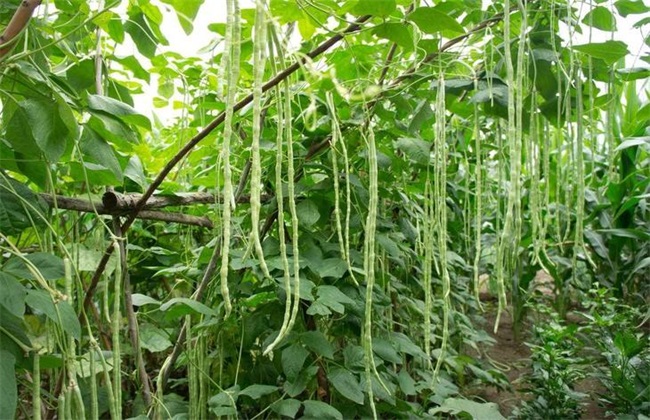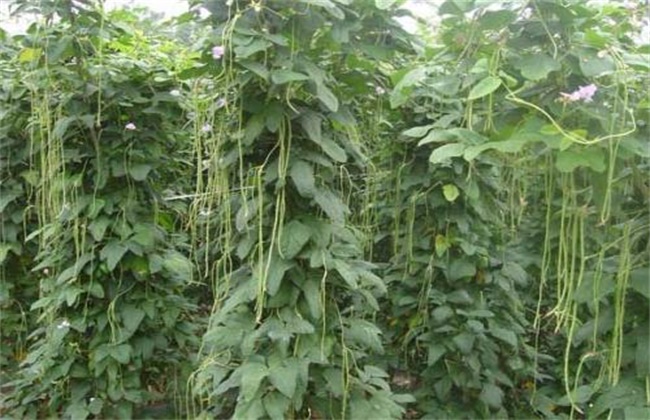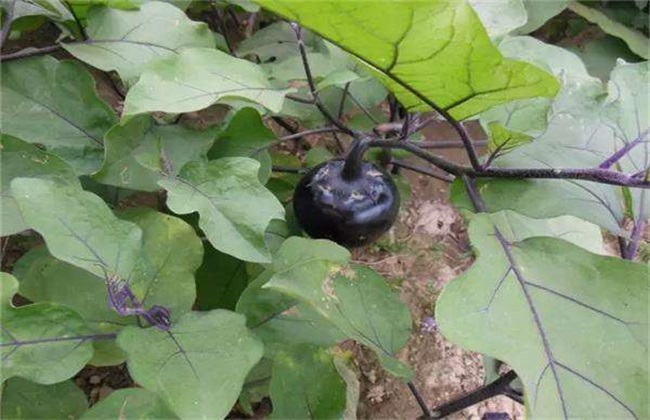Prevention and control measures of bean resting
When planting beans, if the beans appear to rest phenomenon. Therefore, the growth of bean plants will be weakened, leaves will be yellow, flowers will be reduced and pods will be dropped, etc., so the yield of beans will be seriously affected and decreased. The planting benefit of farmers is very unfavorable, so if the beans appear to rest, what should we do? The following small series brings you the prevention and control measures for beans to rest. Let's take a look together!

1. Maintain the environment
Rest generally occurs in summer, in summer, because of the high temperature and humidity environment, so beans are also prone to excessive growth phenomenon. If coupled with drought, then it will inhibit the pollination of beans, so that beans appear dormant phenomenon. Therefore, if you want to prevent rest, then we must first pay attention to creating a suitable growth welcome for beans. For example, control the planting density, strengthen the excessive growth of seedlings, and do a good job in seedling refinement. Avoid excessive growth of seedlings and maintain sufficient room for each seedling to grow.
2. Strengthen ventilation
If beans are planted in greenhouses, then we should pay attention to ventilation and maintain a suitable greenhouse temperature. And when it comes to rainy season, we should pay attention to timely drainage. To prevent excessive accumulation of water in the soil and affect the growth of bean roots, resulting in rotten roots and other phenomena, thus causing rest. As long as a suitable environment is maintained, the phenomenon of beans resting in summer can be reduced. If the beans are long, then it is necessary to control them in time, and the method of hoe can be used to control the long and prosperous situation of beans.
3. Reasonable fertilization
Irrational fertilization is one of the main reasons for beans resting. When we plant beans, we must have a reasonable fertilization plan. When applying base fertilizer, do not add too much nitrogen fertilizer to prevent excessive nitrogen fertilizer from causing excessive growth of bean seedlings and affecting the flower and pod quantity of beans. And when fertilizing, it is necessary to control the amount of fertilizer according to soil fertility, and it is best to be able to test soil and fertilize. Under normal circumstances, the base fertilizer should be applied to about 3000kg of decomposed farm manure per mu, with appropriate amount of calcium superphosphate, potassium sulfate, etc. Then in the later stage, the proportion of phosphorus and potassium fertilizer should be increased appropriately and the application of nitrogen fertilizer should be reduced.
4, pruning and topping
In addition to the above, we should also pay attention to the pruning and topping of bean plants. Control the pod position of beans to prevent excessive pod setting, resulting in yield decline. For the bean plant germination at the bottom of the lateral buds should be erased in time, and then is the bean plant main branch upward about 50 cm lateral buds, should not be retained. To increase permeability at the base of the plant, tip the beans when they begin to fill the entire scaffold. The leaf buds from leaf axils should also be wiped out in time to avoid excessive consumption of nutrients, ensure the normal growth of beans, and prevent the occurrence of resting phenomenon.
The above is a brief introduction to the prevention and control measures of beans. Today's introduction is here, this article is for reference only, I hope to help everyone oh!
Related
- Where is it suitable to grow horseradish in China? it is expected to see the middle altitude horseradish in Alishan.
- How to prevent tomato virus disease reasonably? (Control methods included)
- Many people like to plant towel gourd on the balcony. What are the main points of this method and management?
- What crops can chili peppers be mixed with?
- Fertilization techniques and matters needing attention in Tomato
- What are the grafting techniques for peach seedlings in spring?
- Harm and control methods of root swelling disease of Chinese cabbage
- What are the pests of sweet potatoes? How to prevent and cure it?
- Symptoms, causes and Control methods of navel Rot in Tomato
- The cause of "Cucumber rotten bibcock" in Farmers' planting Cucumber and its Control Plan



